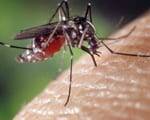Findings suggest mental health providers could target adolescents who are most at risk, providing treatment aimed at early intervention
Some adolescents who suffer with symptoms of depression also may be at risk for developing anxiety, according to a new study of children’s mental health.
The study found that among youth who have symptoms of depression, the risk is most severe for those who have one or more of three risk factors, said psychologist Chrystyna D. Kouros, Southern Methodist University, Dallas, who led the study.
Specifically, those who are most vulnerable are those who have a pessimistic outlook toward events and circumstances in their lives; those who have mothers with a history of an anxiety disorder; or those who report that the quality of their family relationships is poor, Kouros said.
A depressed adolescent with any one of those circumstances is more at risk for developing anxiety, the researchers found.
Adolescents with one or more risk factors can be targeted for intervention
The findings suggest that mental health professionals could target adolescents with those risk factors. Early intervention might prevent anxiety from developing, Kouros said.
“Depression or anxiety can be debilitating in itself,” said Kouros, an assistant professor in the SMU Department of Psychology. “Combined, however, they are an even bigger threat to a child’s well-being. That’s particularly the case during adolescence, when pre-teens and teens are concerned about fitting in with their peers. Anxiety can manifest as social phobia, in which kids are afraid to interact with friends and teachers, or in school refusal, in which children try to avoid going to school.”
The findings are reported in Development and Psychopathology. The study, “Dynamic temporal relations between anxious and depressive symptoms across adolescence,” appears on the journal’s web site at http://bit.ly/16bvDIr.
Kouros co-authored the research with psychiatrist Susanna Quasem and psychologist Judy Garber, both of Vanderbilt University. Data for the study were collected by Garber, a Vanderbilt professor of psychology and human development.
Study confirms previous link of anxiety elevating to depression, finds new link of depression elevating to anxiety
The finding was based on data from 240 children from metropolitan public schools and their mothers, all of whom were assessed annually for six years. The children were followed during the important developmental period from sixth grade through 12th grade. The study was evenly divided between boys and girls.
Consistent with previous research, the authors found also that “symptoms of anxiety were a robust predictor of subsequent elevations in depressive symptoms over time in adolescents.” That link has been known for some time, Kouros said, and the current study confirmed it.
Less well understood by researchers, however, has been the link between depressive symptoms developing further into elevated anxiety, she said.
“The current study showed that depressive symptoms were followed by elevations in anxious symptoms for a subset of youth who had mothers with a history of anxiety, reported low family relationship quality, or had a more negative attributional style,” the authors reported.
Moreover, at-risk youth are likely to have more than one of these vulnerability factors. More research is needed to examine how the various risk factors work together in either a cumulative or interactive way, the authors said.
The authors suggested that early prevention efforts could be effective for depressed children when the risk factors are present.
“Age 10 to age 16 is a key developmental period, because around puberty is when we tend to see depression rates in children rise, especially among girls,” Kouros said. “The findings from this study can help adults who work with depressed youth to target those who are most at risk for developing anxiety too.” — Margaret Allen
Follow SMUResearch.com on Twitter.
For more information, www.smuresearch.com.
SMU is a nationally ranked private university in Dallas founded 100 years ago. Today, SMU enrolls nearly 11,000 students who benefit from the academic opportunities and international reach of seven degree-granting schools. For more information see www.smu.edu.
SMU has an uplink facility located on campus for live TV, radio, or online interviews. To speak with an SMU expert or book an SMU guest in the studio, call SMU News & Communications at 214-768-7650.



 Mosquito indexing system identifies best time to act against potential West Nile Virus outbreaks
Mosquito indexing system identifies best time to act against potential West Nile Virus outbreaks Sweden, SMU psychologists partner to launch parenting program that reduces child abuse
Sweden, SMU psychologists partner to launch parenting program that reduces child abuse Chemical probe confirms that body makes its own rotten egg gas, H2S, to benefit health
Chemical probe confirms that body makes its own rotten egg gas, H2S, to benefit health Study: High-volume Bitcoin exchanges less likely to fail, but more likely to suffer breach
Study: High-volume Bitcoin exchanges less likely to fail, but more likely to suffer breach Musicians who learn a new melody demonstrate enhanced skill after a night’s sleep
Musicians who learn a new melody demonstrate enhanced skill after a night’s sleep Study finds that newlyweds who are satisfied with marriage are more likely to gain weight
Study finds that newlyweds who are satisfied with marriage are more likely to gain weight